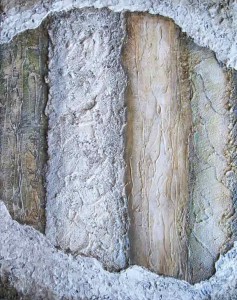Dear Artist,
Here’s an exercise that you might try the next time you’re having a bout of creative constipation. I’ll relate it to painting but it works as well if you’re sculpting or writing a short story. It goes like this:
Make a painting that looks like it was done in five minutes, but take at least two hours to do it. Go seriously to work at making the thing and the job look casual and easy. Give it flourish and spin. Get the gestures right with freedom and paucity. Put meaning and form and character and abandon in every stroke. Avoid the sin of overworking.
Here’s a simple formula that will help you accomplish this: Look three times, think twice, paint once. It’s a method that’s time honored and true, but disarmingly easy to forget. You can choose to be calculating and think it out as if you were decorating a cake and must only squirt once. Or you can commit quickly in the full and comforting knowledge that you can scrape it off right away. I admit that in watercolour, the latter system is a tough one.
Keep in mind that when a master does something, she is able to compress her contemplation into a short period of time. It may appear that she is not thinking at all — but through time she’s been able to compress the accumulated information on her disks. But even a master has to go slow when she pushes into new territory. And then the new territory takes over, and it comes again fresh.
John S. Sargent tells us, “Mine is the horny hand of toil.” James McNeill Whistler says, “Work alone effaces the footsteps of work.” And Picasso suggests that being a painter means knowing how to paint, and when to stop.
If we would make our work appear effortless we need not do other work at all.
Best regards,
Robert
PS: “Ars est celare artem — Art lies in concealing art.” (Latin proverb)
Esoterica: This exercise is the fastest way I know of to start giving your work a new freshness. In case you hadn’t thought about it, there are two main schools of paint application: (1) The “Put on and see how it looks and wipe it off and try again” school. (2) The “Think about it and get it right the first time and let it be” school.
This letter was originally published as “An exercise” on March 3, 2000. Also included is an excerpt from the letter “Sprezzatura” published on July 15, 2003.
Download the new audio book,  The Letters: Vol. 1 and 2, narrated by Dave Genn, here. Proceeds of sales contribute to the production of The Painter’s Keys.
The Letters: Vol. 1 and 2, narrated by Dave Genn, here. Proceeds of sales contribute to the production of The Painter’s Keys.
“You can’t do sketches enough. Sketch everything and keep your curiosity fresh.” (John Singer Sargent)
Featured Artist
I seek to paint the essence and beauty of the natural world, land and sea impressions, textured nuances of tree bark or beautifully imperfect jars of clay.








10 Comments
Thank you, good article
Thank you, have been avoiding the canvas, for a few years. Feel I have enough paintings, what
To do with them, storage etc. But now feel the need to create again, yippee!M
Thank you. I need to do this and do it often. I am too tight
Thank you
Excellent! I’ve been cheating myself and sticking to collage for almost three years to avoid painting. I’ve been making some interesting stuff but my heart of hearts screams, PAINT! This makes me want to get a canvas out right this minute.
Thank you for the words of wisdom and the exercise suggestion. My best (watercolors) are the ones I did fast , wet in wet with a tilted support. I can’t say the same for other media, but I’m just learning oils and acrylics. So far, I love the magic and unpredictability of watercolors, and the fact that you can only control so much. I paint abstractly from memory, so I’m not trying to render any “things”.
To this day my best paintings have been the ones I have not had time to labour over.
Overworking is my biggest weakness. Thanks, Sara, for this reminder.
BTW, my website disappeared a few years ago along with those of a lot of others. Is Facebook a reasonable alternative?
Please add me to ur mailing list.
Try painting with your left hand (if you are right handed) you might like it…
I had a tendon replacement surgery on the thumb of my right hand a few years ago. The morning after the procedure I found myself in the studio as usual but now, painting with my left (non-dominant) hand. The results were remarkably good. I attributed this success in part to drugs from the previous day, but primarily from one of my favorite teaching mantras, you paint with your head, not your hand. I painted solely with my left hand for the next six months, and had a successful show of those works entitled “From The Left Side”. Now a few years later, I paint with both hands, using that unpredictability of my left hand to create some surprises in my watercolors.